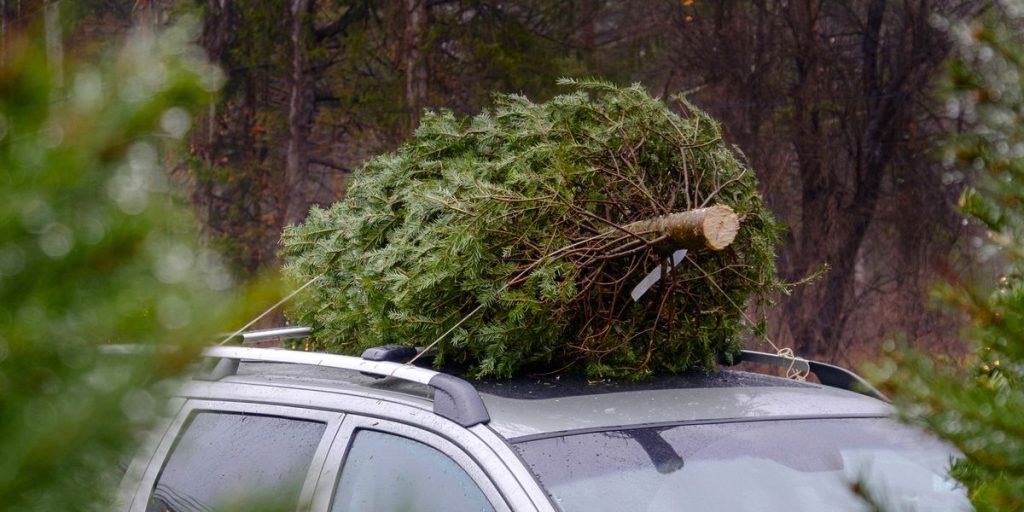There's a Right and a Wrong Way to Transport a Christmas Tree on Your Car

Everyone thinks they know what they’re doing, but AAA once found that almost 20 percent of people had had their tree fall off or out of their vehicle while bringing it home. A roof rack and solid knots should be enough to get your tree home safely, but only if you know what you’re doing.The American Christmas Tree Association says prices are up, so if you want it to be there when you get home, follow our three tips.
‘Tis the season for strapping a pine tree to the roof of your car and then dashing through the snow, sometimes at highway speeds. There are safe and unsafe ways to do this, of course, and since the Internet loves to point out people who choose the latter option, it’s time for us to once again offer tips on how to carry a Christmas tree on your car’s roof without doing any damage to the car or your pride.
The American Christmas Tree Association said it expects there to be enough of a supply of fake and natural trees in the U.S. this year, but—shocker—prices are likely to be higher than last year. The ACTA said prices for real trees are up due to extreme weather events throughout the U.S., while prices for artificial trees could be higher than previously expected because of shipping issues at the ports of Los Angeles, Long Beach, and Oakland, “which will cause disruptions in getting Christmas trees to shelves and consumers,” the group said.
Most of us don’t regularly throw a six-foot tree on top of our car, and it’s clear that not everyone understands the basics. According to a study conducted by AAA, nearly one in five people who bought a real Christmas tree had it fall off or out of their vehicle when trying to get it home. You don’t want to join that crowd, even if only to prevent your Christmas budget from spiraling. AAA said that fixing minor surface scratches from an improperly secured tree can cost $150 while repainting deeper blemishes on the roof can reach $1500.
Here are a few tips to safely transport a Christmas tree to avoid these and other potential problems. First, bring rope or straps, gloves, and perhaps a large blanket or tarp when it’s time to pick up your tree. Second, feel free to send this article to your friend who’s not exactly a knot-tying expert. On to the tips:
Roof is best. One of the easiest ways to transport a Christmas tree is to tie it to the roof rack, with the trunk (the cut part) of the tree facing the front of the vehicle. If you don’t have roof rails, you can make do with some protective surface (like an old blanket or large towel) to keep the needles and pine sap from the paint or the sunroof. Without roof rails, you can run the tie-down ropes or straps through your car door (not the windows). Alternatively, you can place the tree inside if your car is large enough and you don’t mind vacuuming up pine needles.
. Whether the tree is on the roof or in the car in the back seats, it’s helpful to have it tied up tight. Some tree sellers will provide the tree to you bundled up in netting, which makes handling the tree easier and provides aerodynamic assistance when it’s on top of the car. If you’re using the roof, strap the tree to the car in three areas: front, middle, rear. The AAA recommends against using the nylon rope provided by many tree lots. If your car doesn’t have rails, you can open the doors and run the rope through the cabin and then up to the roof. When you close the doors, the tree should remain tightly tied town, but this method may damage door seals.
. If you can, avoid the interstate and high speeds on the way home. Not all knots survive the stress of moving at 70 miles per hour.
Tie it tight
Go slow
This content is imported from OpenWeb. You may be able to find the same content in another format, or you may be able to find more information, at their web site.



